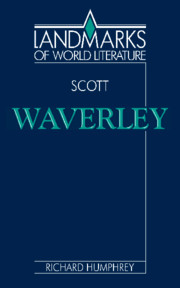Summary
A landmark of literature is a work from which successions of readers – or subsequent authors, and hence literary historians – take their bearings. It may crystallize an experience or epitomize an age. It may initiate a genre or exemplify a mode. It may influence intellectual life or even enlarge the readership of literature and the possibilities of publishing. Or, in a rare instance, it may do all of these things. Such a rare instance is Walter Scott's Waverley (1814).
The sheer number and quality of writers who took their bearings from Waverley would ensure its position in literary history. One has only to study the plots, casts and themes of the cream of European novelists in the 1820s and 1830s – from Balzac to Stendhal, from Pushkin to Gogol, from Manzoni to Tieck – to discover that this story set in and around the 1745 Jacobite rising in Scotland not only struck a chord all over Europe: it dictated much of the subsequent score too. On his death in 1832, The Times could justly call Scott's name and work ‘not only British but European – not only European but universal’.
Such emulation is accorded only to innovation. There had been countless novels set in the past before. But with its new sense for the qualitative difference between present and past, and with its new awareness of causation and interconnection within that changing past, Waverley was more.
- Type
- Chapter
- Information
- Scott: Waverley , pp. 1 - 4Publisher: Cambridge University PressPrint publication year: 1993



